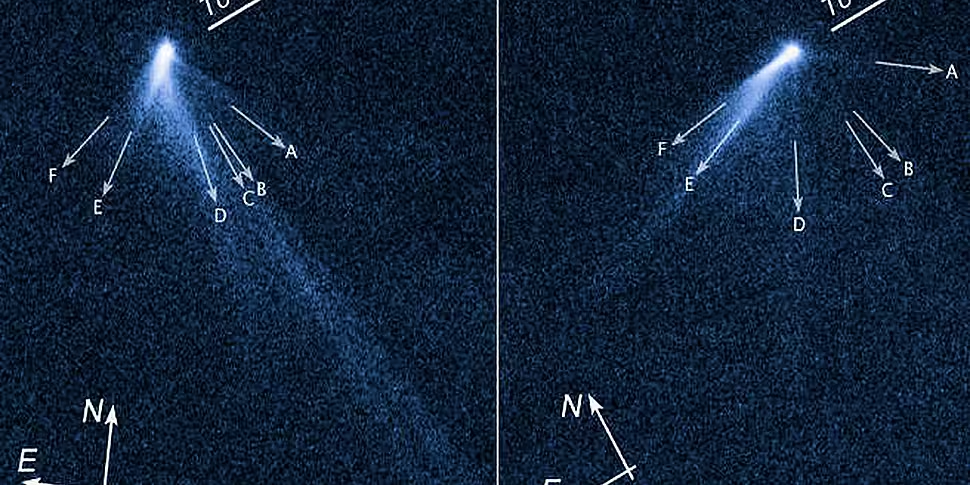Using NASA's Hubble Telescope, astronomers have released details of the spinning asteroid. Whereas asteroids are usually spotted as a single point of light, P/2013 P5 has been observed spewing six separate dust tails. NASA compares its appearance to that of a rotating lawn sprinkler or the spokes of a wheel. It has also been contrasted with a comet - i.e. a celestial object with a visible tail or atmosphere consisting of gas and dust particles, sometimes observable on Earth.
Having first spotted the 'fuzzy' asteroid on August 27th, the team's further observations on September 10th and 23rd revealed not only the distinctive tails, but also a totally different appearance on the different days. David Jewitt of the University of California explains "we were literally dumbfounded when we saw it. Even more amazing, its tail structures change dramatically in just 13 days as it belches out dust. That also caught us by surprise. It's hard to believe we're looking at an asteroid."
Astronomers have come up with a few possible reasons for the unusual formation. Given the limited amount of dust being 'sprayed' by the tails in relation to the size of P/2013 P5 itself, they suggest it is unlikely to be the result of a collision with another asteroid, which would have caused significantly more damage and dust.
Instead, it has been suggested that the multi-stream 'dust ejection' - which is estimated to have been occurring at various intervals for more than six months - was the result of radiation pressure from the sun. This could have sped up the asteroid's spinning speed, meaning the asteroid's "weak gravity no longer could hold it together". This resulted in surface dust shattering and 'falling off' the rock as it spun, creating the observed dust streams.
Jewitt believes "in astronomy, where you find one, you eventually find a whole bunch more. This is just an amazing object to us, and almost certainly the first of many more to come."
You can read more about the astronomers' findings and see more images of P/2013 P5 by visiting the Hubble site here.









